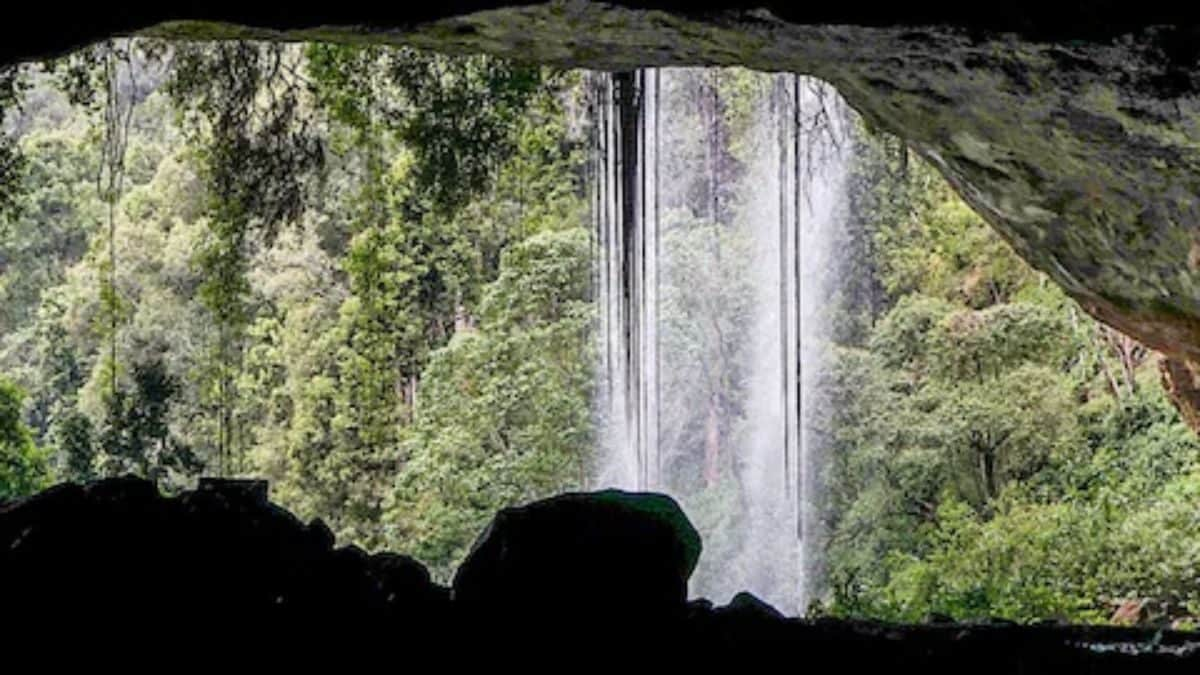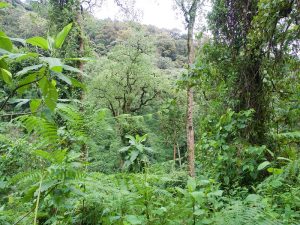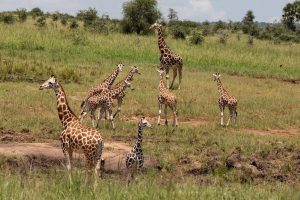Exploring caves and waterfalls in East Africa
Exploring caves and waterfalls in East Africa would be a great addition to your bucket list if you`re searching for new and exciting experiences. Numerous caverns and waterfalls in East Africa are worth exploring.
Best cave Adventures in East Africa
A cave is a natural chamber or series of chambers in the earth or in the side of a hill or cliff.
Kitum cave
Contrary to what some have assumed, Kitum Cave is not a lava tube but rather a non-solution cave formed in pyroclastic [volcanic] rocks. It stretches close to the Kenyan-Uganda border, roughly 200 meters [700 feet] into the slope of Mount Elgon. Animals like elephants have been exploring the cave’s depths for ages. In quest of salt, which is abundant in the walls. The cave walls are scarred and furrowed as a result of the elephants’ use of their tusks to break off sections, which they subsequently eat and swallow. Perhaps making the cave larger over time. Hyenas, buffalo, and bushbuck visit Kitum Cave to eat the salt that the elephants have left behind.
Where is Kitum cave located?
Located in Mount Elgon National Park, Kenya, close to the Kenyan border with Uganda, Kitum Cave is one of the five “elephant caves” on Mount Elgon.
Garama Cave
One of the oldest caves in the Albertine Rift Valley, it was previously inhabited by the cunning Batwa warriors who engaged in internal warfare with the Bantu villages. Its only 3km from the Mgahinga park headquarters to this cave entrance and the guide will tell you how the Batwa managed to survive and even launch attacks from this cave. The Garama cave is 342 meters long and 14 meters deep.
Where is Garama Cave located?
Garama Cave is situated beneath the northern edge of the plateau in the Kisoro area of Mgahinga Gorilla National Park in southwest Uganda. Approximately 3 kilometers from Ntebeko.
Panga ya Saidi Cave
The Dzitsoni limestone hills are home to the archeological cave known as Panga ya Saidi. And it is roughly 15 kilometers from the Indian Ocean. There are abundant archeological deposits from the Iron Age, Later Stone Age, and Middle Stone Age at the cave site. According to radiocarbon dating and optically stimulated luminescence dating, the exceptionally long record of human activity preserved in excavated layers spans around 78,000 years to 400 years ago.
Where is Panga ya Saidi Cave located?
An ancient cave site called Panga ya Saidi is situated in Kilifi Country in southeast Kenya.
The Impressive waterfalls of East Africa
A waterfall is a point in a river where water flows over a steep or vertical drop, often forming a plunge pool at the base.
Best waterfalls in East Africa
Sipi Falls
Sipi Falls is located on the foothills of Mount Elgon, close to the Kenyan-Ugandan border, on the outskirts of Mount Elgon National Park. The word “sep,” which refers to a wild, banana-like native plant that grows along the banks of the Sipi River. The locals there utilize this plant as medicine to treat measles and fevers. Three waterfalls that originate at varying elevations make up the Sipi Falls. The main fall, which is the final in the sequence, is the highest fall. And this fall descends from a height of 100 meters. It is slightly larger than the other two falls, although they all contribute to Uganda’s breathtaking landscape.
How much does it cost to visit Sipi Falls?
Sipi Falls normally costs 50,000 Ugandan shillings (about $15 USD) to enter. And depending on the size of the group and the length of the tour, local guides may charge an extra cash. Ranging from 10,000–20,000 UGX (about $3–$6 USD).
Where is Sipi Falls located?
Sipi Falls is located close to Mount Elgon, which shares a border with Kenya, in the Kapchorwa District in Eastern Uganda. It is reachable by car and is roughly 277 kilometers (172 miles) from Kampala, the capital of Uganda.
Kalambo Falls
Archaeologists have discovered evidence of early humans using fire at least 60,000 years ago, which makes Kalambo a significant location. One of the earliest documented examples of our ancestors using fire for cooking, warmth, protection, light, and possibly even religious rituals is this. The region is listed as a potential new world heritage site by the UN and is a protected national monument.
Where is Kalambo falls located?
The Northern Province is home to Kalambo Falls, which is located on the Kalambo River. Which separates Zambia and Tanzania, 33 kilometers from Mbala.
Victoria Falls
The Victoria Falls, which naturally divide Zambia and Zimbabwe. Are a breathtaking spectacle of breathtaking beauty and majesty on the Zambezi River. Because of the tremendous spray and amazing noise produced by the flowing river. The Kololo tribe that lived there dubbed it “Mosi-oa-Tunya,” or “The Smoke that Thunders.” When considering both its width and height, Victoria Falls is now referred to as the world’s biggest curtain of falling water.
From a special spot over the Knife-edge Bridge, one may get the best view of the Eastern Cataract, the Main Falls, and the Boiling Pot, where the river turns and descends the Batoka Gorge. The Lookout Tree, Devil’s Pool, Livingstone Island, and the Falls Bridge are additional viewpoints that offer expansive views of the Main Falls.
Where is Victoria Falls located?
Victoria Falls is a magnificent waterfall that is situated at the Zambia-Zimbabwe border, approximately halfway along the Zambezi River.
How much does it cost to visit Victoria Falls?
On both the Zambian and Zimbabwean sides, adults should budget $30 for a single admission to Victoria Falls.
Here’s a more thorough explanation:
Admission Charges:
- Foreign guests: $50
- Visitors from SADC: $30 USD
- Zimbabweans: $7
- All-visitor lunar tour: $100 USD For more information about Exploring caves and waterfalls in East Africa Contact us




